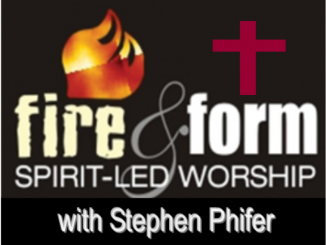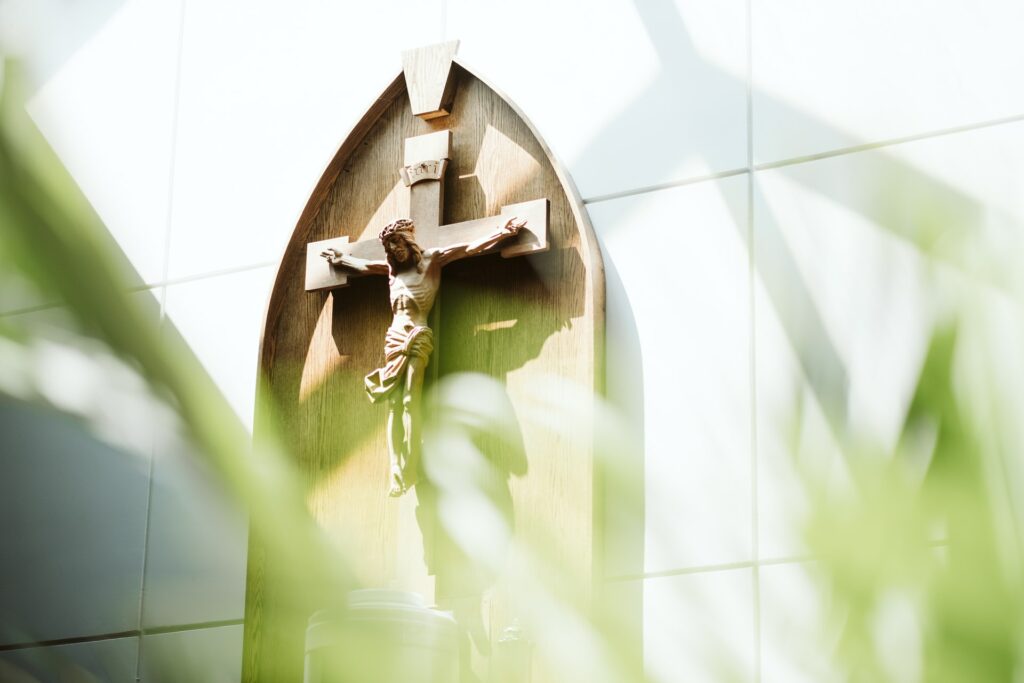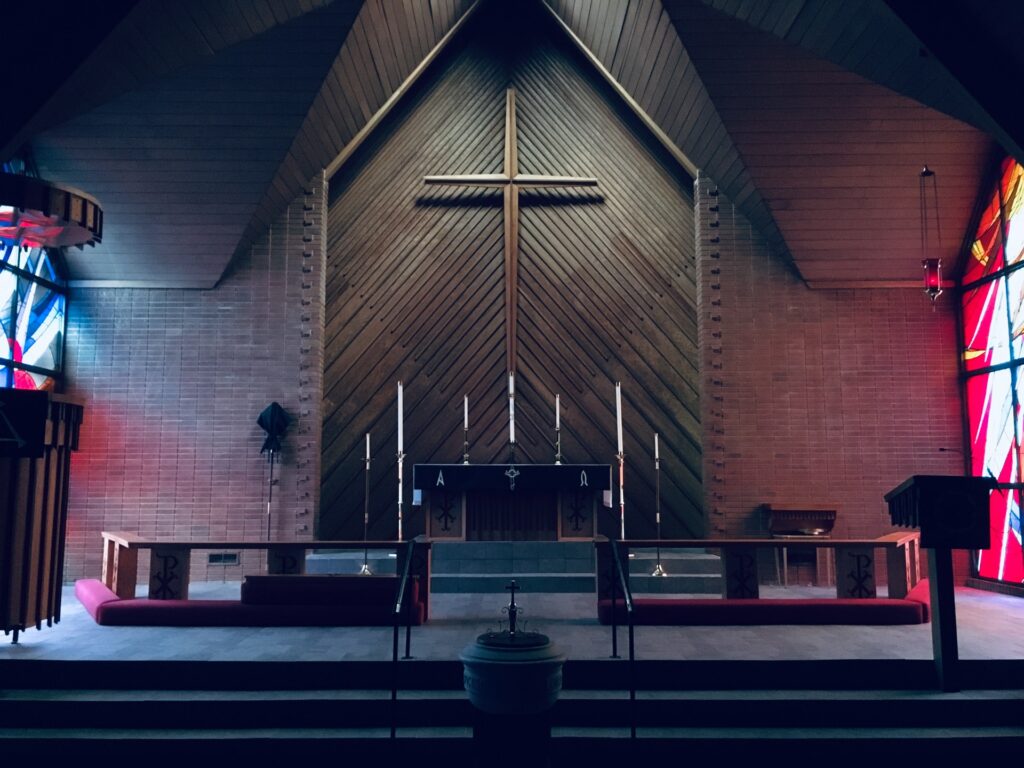Pentecostal Structure: Three-Fold Worship
‘But mark this: There will be terrible times in the last days. People will be lovers of themselves . . . having a form of godliness but denying its power. Have nothing to do with them.” (2 Tim 3:1-2, 5 NIV)
Introduction
 In my tenth grade biology class, I first heard about something called an ecosystem—possibly a simple pond of water in a field. The pond was the host to all manner of plant and animal life from micro-organisms to fish to turtles to the small mammals who came to drink. To take away any element of the environment–the oxygen in the water, the nutrients in the soil, or the sunlight shimmering on the water–was to destroy the whole thing. This is a good picture of Pentecostal Worship—a spiritual ecosystem that supports supernatural life when all of its elements are in place.
In my tenth grade biology class, I first heard about something called an ecosystem—possibly a simple pond of water in a field. The pond was the host to all manner of plant and animal life from micro-organisms to fish to turtles to the small mammals who came to drink. To take away any element of the environment–the oxygen in the water, the nutrients in the soil, or the sunlight shimmering on the water–was to destroy the whole thing. This is a good picture of Pentecostal Worship—a spiritual ecosystem that supports supernatural life when all of its elements are in place.
Embedded Theology
Some would say the title of this article is an oxymoron—a self-contradictory statement. Pentecostal Structure? ‘If one is led by the Spirit, one is certainly not structured,” some would say. Really? ‘To be truly spiritual, worship must be free of form,” they might argue. Again, really? As the title of this message indicates, we are seeking both fire and form, a structure that throbs with the power of God to change lives. The two quotations in this paragraph represent what is called an embedded theology within the ranks of classical Pentecostals.
 An embedded theology is more a cultural than a spiritual phenomenon—a cherished belief people hold without knowing its origin or authority. It is a deeply held belief that has never been challenged by reason, measured against history, or tested by Scripture. Things that people believe without scriptural support and against all logic and experience, are the theologies of church splits and wasted ministries. Arguments for embedded theologies are loud and emotional and lead to power plays and other less-than-godly behaviors and tactics. Without scriptural basis or reasonable rationale, personalities and personal preferences take the stage, and what is thought to be a spiritual or theological debate is actually a culture clash.
An embedded theology is more a cultural than a spiritual phenomenon—a cherished belief people hold without knowing its origin or authority. It is a deeply held belief that has never been challenged by reason, measured against history, or tested by Scripture. Things that people believe without scriptural support and against all logic and experience, are the theologies of church splits and wasted ministries. Arguments for embedded theologies are loud and emotional and lead to power plays and other less-than-godly behaviors and tactics. Without scriptural basis or reasonable rationale, personalities and personal preferences take the stage, and what is thought to be a spiritual or theological debate is actually a culture clash.
Let’s settle this now. God is a God of form. Psalm 19 reminds us that creation itself tells about Who the Creator is–a God of power and might and matchless form.[1] The forms and parameters of the universe are so precise that man can send a spaceship to the edges of the solar system and know exactly where everything will be at any given moment. In the twentieth century man even discovered that, underlying this cosmic perfection, there is still a measure of random wisdom that only God can know. In the midst of universal precision there is still room for the improvisational power of God. Physicists call this phenomenon relativity. I call it the sovereignty of God.
Individual Worship
Creation tells us of the nature of God, a Creator whose power flows through form and structure. Paul’s warning to Timothy was that in the last days, people would be self-centered, judging all of life by personal benefit. ‘What’s in it for me?” will be the tenor of those times. When people apply that outlook to public worship, the result is what my mentor, Dr. Robert E. Webber, calls ‘narcissistic worship.” This sickness can infect our songs, our services, and our souls. Individual ‘worshipers” become the arbiters of what will and will not be done by what pleases them, or in more pseudo-spiritual terms, what ‘ministers” to them. In the 1970s a popular song declared, ‘It can’t be wrong if it feels so right.” To many in this new century, that faulty axiom has become the test of what is right and wrong in public worship. Narcissism robs worship forms of their godly power, leaving only the music and ceremony to limp along for an hour or so. Simply put, if the ‘worship” is about us, then it isn’t about Him. We have lost the oxygen, rich soil, and sparkling sun in our ecosystem, and our pond is drying up.
Forms of Public Worship
The twentieth century brought something else to the world in addition to the theory of relativity—the Pentecostal/Charismatic Renewal. I have wondered what the greatest contribution of Classical Pentecostalism to the church at large might be. Missions were in existence before our era. Sunday school and mass evangelism also predate us. We cannot claim the activity of the Gifts of the Spirit as our contribution since this has been seen since the days of the Apostles. What then does the past century offer unique to Christian experience? Perhaps it is a three-fold form of public worship: Worship/Word/Altar.[2] Judging from our history and my personal experience growing up in the Assemblies of God, we have discovered a form of public worship consisting of:
Pentecostalism to the church at large might be. Missions were in existence before our era. Sunday school and mass evangelism also predate us. We cannot claim the activity of the Gifts of the Spirit as our contribution since this has been seen since the days of the Apostles. What then does the past century offer unique to Christian experience? Perhaps it is a three-fold form of public worship: Worship/Word/Altar.[2] Judging from our history and my personal experience growing up in the Assemblies of God, we have discovered a form of public worship consisting of:
- (1) a time of worship—the ministry of the congregation, followed by
- (2) the preaching of the Word—the ministry of the preacher, and
- (3) the Altar Service, a time of corporate and private prayer when everyone responds to the Word and Presence of God.
An Altar Service is more than an altar call. The altar call, or invitation, has a history that predates us. The Altar Service begins with an altar call but then takes on a life of its own. Years before the ‘song service” expanded into a time of ‘praise and worship,” the Altar Service was the part of the service where we learned to follow the moment-to-moment leadership of the Holy Spirit. Some unique elements of the Altar Service are:
- a lack of time-consciousness;
- a sense of waiting on God;
- a sense of dwelling in His presence;
- a spontaneity and flexibility;
- a blending of private and corporate prayer.

In those times of dwelling in the presence of God, with no thought of the clock, with personal involvement, and with a willingness to go wherever the Spirit would lead, the Pentecostal work of the Spirit gets done. People are healed, baptized with the Spirit, and blessed with the leading of the Holy Spirit into life-long ministries. Forgiveness flows from wounded hearts to those who have done the injury, healing relationships. Chains of bondage fall before the power of God, breaking addictions and lifting spiritual darkness from the minds of God’s people. The works of the Messiah in Luke chapter 4 and Isaiah chapter 61 are accomplished in our midst.[3]
Conclusion
Like the ecological pond of high school biology, Pentecostal worship is a delicate, if powerful, environment. Each part of this spiritual ecosystem is essential to the Life of the Spirit.
- There must be worship—the ministry of the People of God (the liturgy). We must treasure and protect it from narcissistic corruption and from outright neglect. This is like the oxygen in the pond’s water.
- There must be anointed preaching of the Word—the ministry of the preacher. He or she possesses an unction from the Spirit to present the Word of God with authority beyond individual talents and skills. This corresponds to the nutrients in the soil around and under the pond.
- Finally, there must be time for all to respond to the Presence of God in the Worship, and the power of the Word in the preaching—the Altar Service. This is the ministry of the Holy Spirit to us and the ministry of the people to the Lord. It is like the shimmering sunlight dancing on the surface of the pond, giving life and beauty to all creatures that draw near.
I believe Worship/Word/Altar is a form of godliness full of the power of God for this new century.
Dr. Steve Phifer received a Doctorate in Worship Studies from the Robert E. Webber Institute for Worship Studies. He has taught at Valley Forge University and Southeastern Assemblies of God University. For many years he was the Worship Pastor at Word of Life Church in Alexandria, VA.
More of Dr. Phifer’s materials can be found at stevephifer.com.
